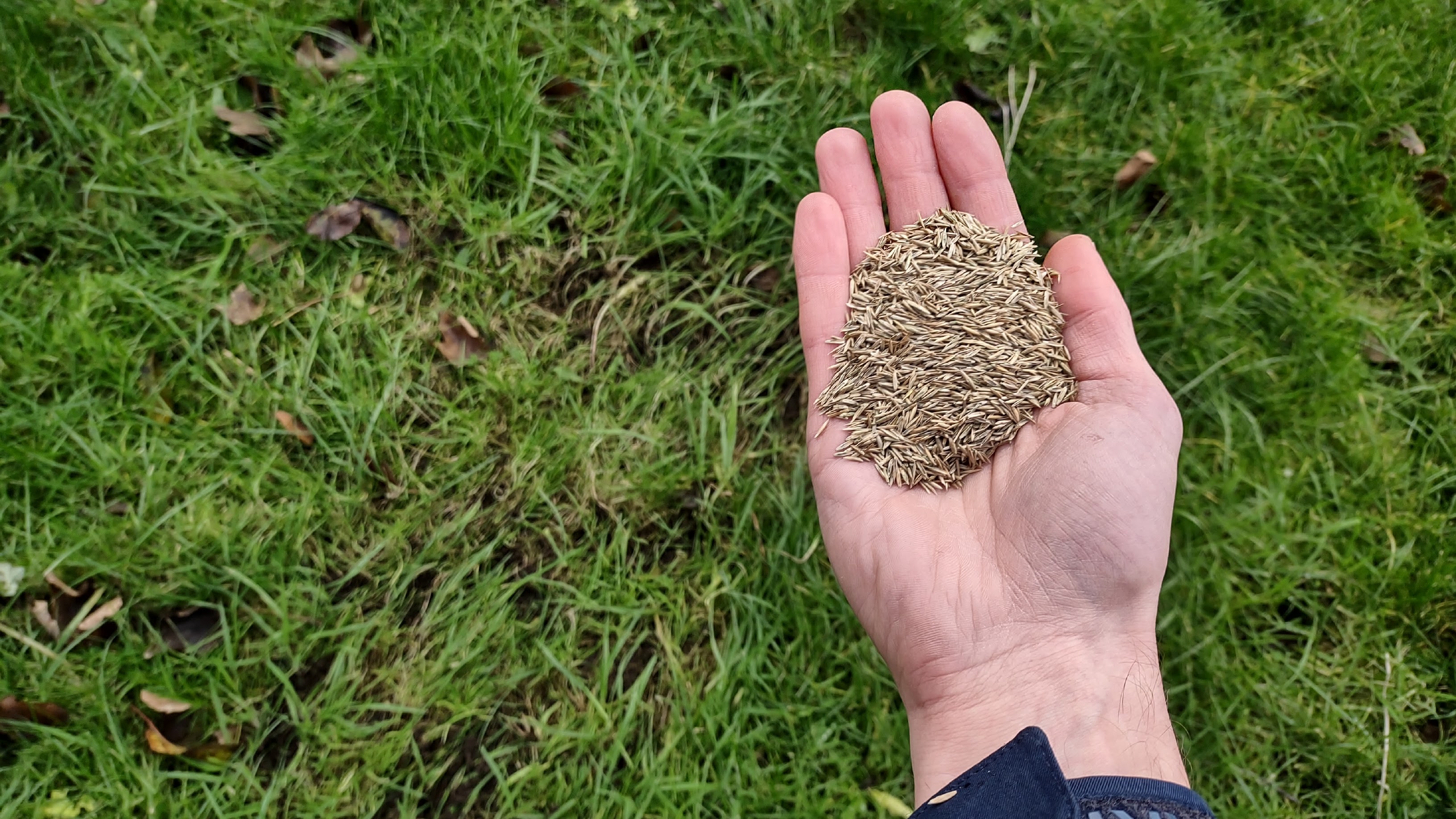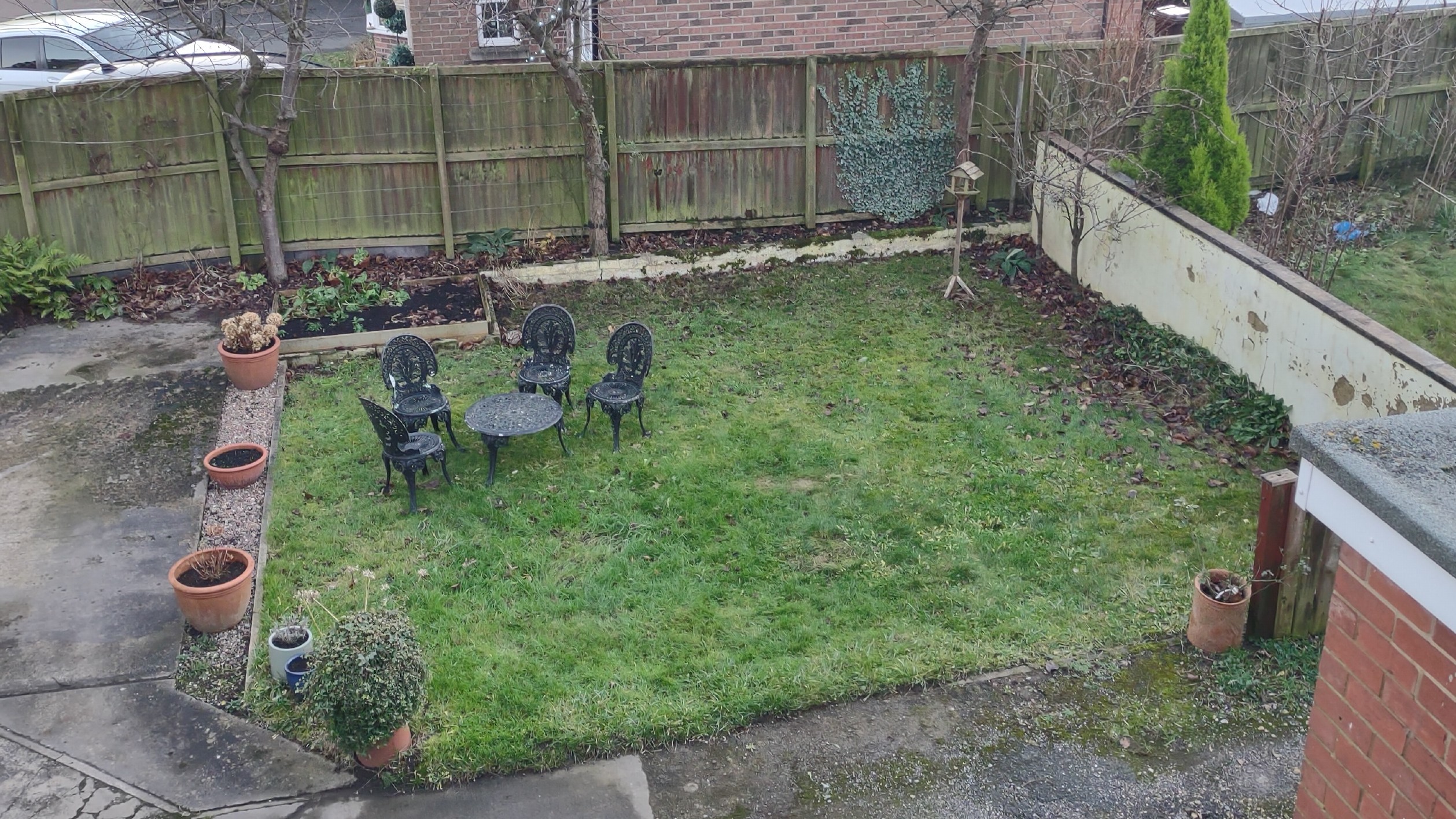How to plant grass seed — expert advice for a healthy green lawn
Experts reveal how to plant grass seed

- Lawn mower (e.g. one of the best electric lawn mowers)
- Dethatcher (optional) like this Worx electric dehatcher at Target
- A seed spreader (optional) such as this handheld one at Target
- Fast-growing grass seed (shop Amazon)
- Watering can OR a sprinkler system just like the LADER above ground garden sprinkler kit (Amazon)
If you want to know how to plant grass seed, either to restore your lawn health or start a new yard from scratch, you're in the right place.
There's a few other reasons why you might need to grow grass seed: it's a great way to fix patchy grass, cure a nasty case of lawn rust, thicken up a thin area by overseeding a lawn or eliminating weeds in your yard.
According to gardening expert David Hedges Gower, chairman of The Lawn Association, sowing grass seed is all about preparation and planning.
"The key to any new lawn area is quite simple: plan and look at not only what you will need, but also look at what can go wrong," David told Top Ten Reviews. "So even the lawn shape can be considered. Remember about the mowing. Short turn areas or sharp corners don’t suit mowers so a simple flowing design may work best."

David Hedges Gower has more than 40 years of lawn care experience. He established his successful lawn care company in 2004. He is also the chairman of The Lawn Association.
"Plan the seed and the way you will get into the ground. Select the best time to allow nature to contribute, be that with rainfall or warm soils. Ensure you have an adequate water supply if you have to intervene and help the lawn along, and best of all, be prepared with fresh sharp mower blades once your seeds have established."
This guide will talk you through how to plant grass seed in five easy steps.
Before you begin planting
Fixing a patchy or thinning area in your yard by planting grass seed could be a waste of time if you don't know why it happened in the first place. There are some underlying issues that could be to blame including disease, dog urine, heavy foot traffic, bug problems, not enough irrigation on sunlight, thatch, mowing the lawn too short or a problem with the soil's pH.
Sign up to receive the latest news, reviews, buying guides and deals direct to your inbox
To save you having to reseed because of an existing issue, it might be worth testing the soil first. You can buy a kit from the hardware store to test the soil pH for any nutrient deficiencies.
Meanwhile, planting a whole new lawn from scratch also requires some thorough prep (more about this below).
How to prepare the soil before planting grass seed
David told Top Ten Reviews: “To make seed work best, you must think about how the grass plants will grow and about the seedbed you are to lay the seeds into.
“So, the top 3-4 inches are important when it comes to the seed establishment and the best chance of germination. If your lawn is small, you can turn it over with a spade or alternatively rotovate with a machine. Both will improve the soil growth.
“Once the soil has been ‘turned’, allow it a few days to breathe before starting to move any soil around. Once the levelling of the soil is done, it is time to ‘consolidate’ it back down. This is best done by shuffling your feet and using your own body weight. Anything heavier can cause compaction issues. Once you have done this, re-establish the levels by passing across with a light rake in another direction."
Quick steps to planting grass seed
- Prepare the area: remove debris, weeds and thatch. Consider mowing or raking the soil if sowing a new lawn.
- Ensure conditions are right: look at weather, temperatures and any other possible issues.
- Sow the grass seed: cover with soil and consider using hay to deter birds.
- Water the area: cover the lawn with a fine spray - don’t over-water.
- Keep watering for six weeks: and don’t step on seedlings during this time.
Step by step guide: How to plant grass seed
1. Prepare the area

Firstly, you must clear the site of any vegetation, advises David. "You may decide to choose a chemical process to eradicate any foliage, so you are left with a clean seedbed. Next, decide whether you want to change any levels, fill any depressions or even lower some high spots. Of course, this can sometimes involve adding or bringing soil in, but can be that high spots are pulled into low spots."
"Ensure the soil is consolidated enough to take your weight but make sure there is enough of a tilth to allow seeds to be covered," says David.
If you're just overseeding some patchy areas, it would be a good idea to figure out how to dethatch the lawn, rather than mowing the entire area.
"Before you plant your seed, add a pre-seeding fertilizer that is high in phosphate so that the new seedlings have some readily available food to start their new life," recommends David.
"Apply this at 35-70gms2 or ask suppliers for their recommendations. The main thing is the food needs to be readily available, not slow-release or coated."
2. Ensure conditions are right

Then decide on the timing of when to sow grass seed so you can look at weather, temperatures, rainfall, watering, and any other possible issues.
When it comes to planting grass seed, timing really is crucial. The best time to sow it will depend on the climate zone you're in, and the type of grass (see FAQs below for more on this).
3. Sow the grass seed

Sprinkle your grass seed onto the areas of the lawn where you’d like new grass to grow.
David says: "Apply the seed in at least two directions to ensure good coverage. This can be done by several application methods: a spreader (one that drops the seed, preferably) or the old-fashioned way of using your hands.
"Once you have spread the seed, it now has to be covered with soil to make sure of seed-to-soil contact. Do this by raking the soil in a diagonal direction to that which you dropped the seed. But also remember to not plant the seed too deep and not every single seed needs to be covered."
Aim to sow around one pound of seed per 30 square yards of lawn area. The coverage should be fairly dense, with roughly 10-20 seeds per square inch.
4. Water the lawn

Once the seeds and the feed is down, it is down to nature to germinate it or for you to help it along with regular watering, says David.
"Always apply water in very small amounts, and use the power of the sun. It's that heat — and the water — that ‘pops' the seed into life."
This two-gallon watering can from Amazon would help or, if you have a larger area, the Aqua Joe SJI-OMS16 Indestructible Metal Base Oscillating Sprinkler with Adjustable Spray (also Amazon) would cover it.
Craig Morley from Budget Seeds says: “You may want to protect the grass seeds from birds by covering the area with a garden fleece or hay. This can also improve germination by keeping the soil warm and moist. If you do not have garden fleece, you can instead increase the sowing rate by fifty percent to compensate for any losses."
Garden fleeces start from as little as $11 on Amazon which are available in a range of sizes to suit the size of the area your seeding.
Craig Morley is the Head of Sales and resident gardening expert at Budget Seeds. He has extensive and professional knowledge of hundreds of different plant varieties.
5. Keep watering for six weeks

The seeds should be kept moist for at least six weeks after sowing. So, on days when it doesn’t rain, take a moment to water the grass.
With that said, you should avoid walking on the grass during this time. It might be a good idea to water from a distance, using a tool such as a hosepipe with a spray nozzle.
Once the grass has established it would be prudent to know when is the best time to mow the lawn to ensure that you maintain a healthy, green growth on the new shoots.
FAQs
Can you just sprinkle grass seed on lawn?
Sprinkling grass seed on the lawn is certainly an important part of the sowing process – but there’s a little more to it than that. For a start, you’ll need to prepare the area as outlined in the step-by-step guide above, by removing materials such as fallen leaves and thatch.
Once you’ve fully prepped the area, you can sprinkle over the grass seed by hand. Or, if you want to take the effort out of seeding a large area, you can use a tool such as a spreader. In order to achieve healthy, even growth, the seeds should be spread at a density of about 10-20 per square inch.
Can you use too much grass seed?
Yes, you can use too much grass seed during sowing. If you exceed a density of around 20 grass seeds per square inch, then the closely packed seedlings might end up competing against each other for an inadequate supply of water, nutrients and light.
Densely seeded grass can often grow well at first, but in the long term it is likely to succumb to turf disease. Meanwhile, you’ve used up more grass seed than you needed to.
How do I maintain my new lawn?
After the grass seed has begun to germinate, you should wait at least three weeks before mowing the grass, and do not cut off any more than a third of the total grass length, advises Craig.
"You will also need to feed your lawn with fertiliser and re-seed around once or twice a year to keep it in a healthy condition. If there is a dry period, be sure to water the lawn with a garden hose or sprinklers."

Pete has reviewed hundreds of gardening products for titles including TopTenReviews, Ideal Home and the London Evening Standard, as well as writing articles on diverse topics for other publications such as The Guardian and BBC Good Food. Pete loves spending time in his yard – although, having just read The Day of the Triffids by John Wyndham, he is regarding his plants with a newfound suspicion.
